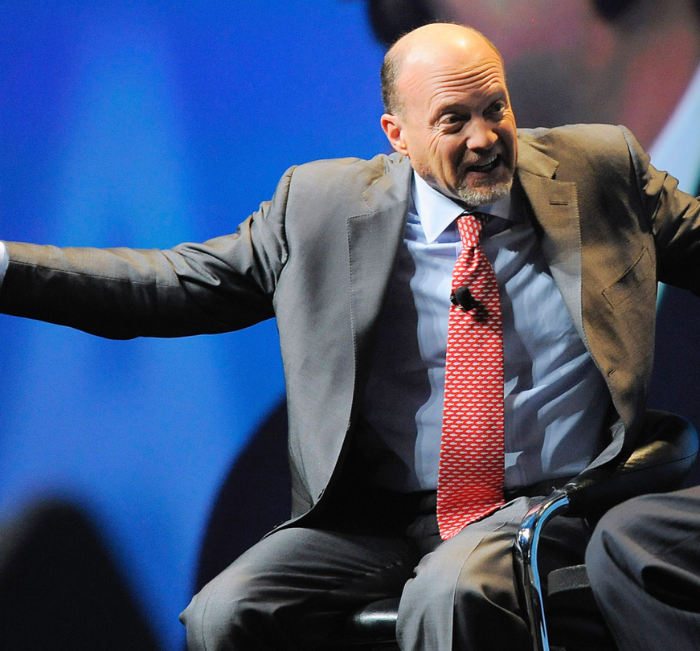Today we have a special issue on investing in Vintage Porsche Posters.
This issue was authored by a good friend of the Alts community, Christian Braun.
Christian is the founder of HobbyDB, the world’s fastest-growing database of collectibles. He and his team are on a quest to document every collectible ever. Think of it like “Wikipedia for collectibles.”

Newer readers may not grok the idea of posters as an investment, but they absolutely can be.
We’ve written about investment-grade concert posters in the past, and one of the proudest holdings in our ALTS 1 Fund is this 1966 Grateful Dead Skeleton & Roses poster, graded 9.8 from CGC.
Today’s issue explores what makes Porsche posters uniquely cool, and is chock-full of delicious vintage Porsche eye candy.
Let’s roll 👇
Table of Contents
Everyone loves a Porsche
When it comes to elegance, power, and performance, very few automobile manufacturers have the staying power of Porsche.
And even fewer of them can trace their entire evolution through the art of vintage posters.
Yes, the same posters we hung on our walls as kids; the ones that inspired greatness — both on the track, and on the highways hug the globe.
Everyone loves a Porsche. The brand has few haters. And that’s exactly where the power of Porsche resides. The company has a near-universal love; a unique ability to appeal to both race enthusiasts, as well as everyday drivers enjoying the sexiness, durability, and luxury.
And the numbers back it up. Last year, Porsche won more than 30,000 race victories and sold more than 300,000 cars.
For many Porsche owners dating back several generations, it all began with a poster on their wall. That daily reminder that the open highways are calling…
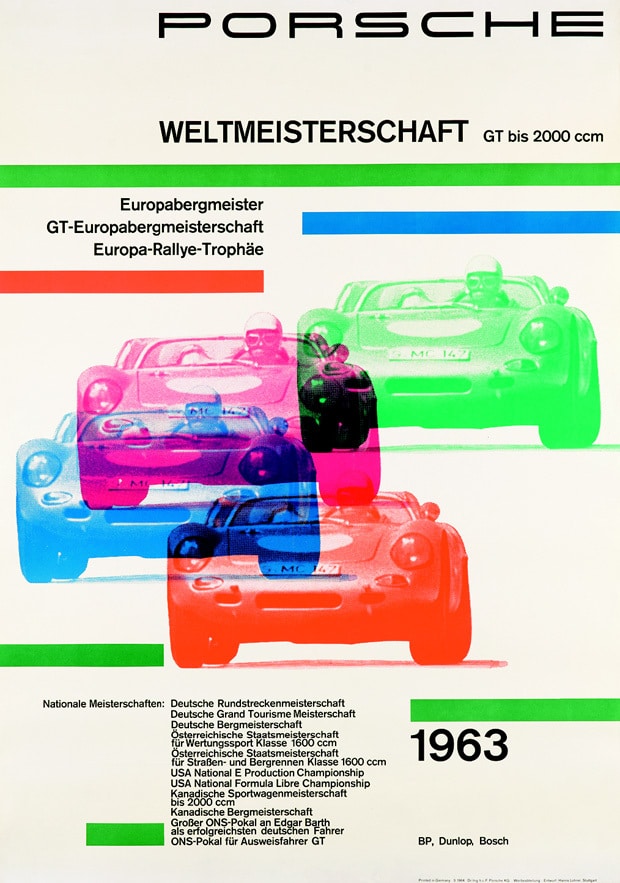
And as Porsches turned into investments, so too did the posters.
Today we’re going to share the history of the Porsche brand via its posters and how investing in them can be just as fulfilling and profitable.
The allure of collecting posters
Posters depict our favorite athletes, musicians and superheroes. They make our bedrooms, garages and man caves unique. No two dorm rooms or basements are the same.
Turns out, holding on to some of those posters can net you a nice investment (as long as the corners haven’t been ripped by tape).
Posters have become big business in the world of collecting.
For example, a 1927 international poster for the film Metropolis is one of the most sought-after movie posters ever, with only four known in existence.
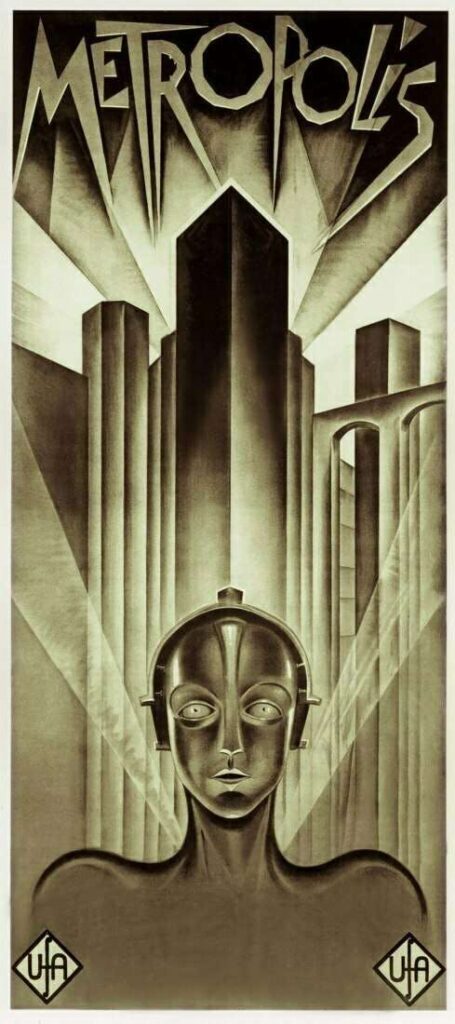
One of the other four was auctioned in 2012, in a lot that included classic posters from King Kong, The Invisible Man, and Arsenic and Old Lace. The bundle went for a cool $1.2 million.
What makes many of these vintage posters so valuable, aside from their rareness, is the complex process and lithography that went into creating them. It wasn’t as simple as printing a PDF!
The world of Porsche posters, which date back to the early 1950s, is no different. The ones that avoided the wall tape and survived in mint condition can fetch upwards of $30,000 – such as this 1968 Sebring 12 Hour Race Poster…
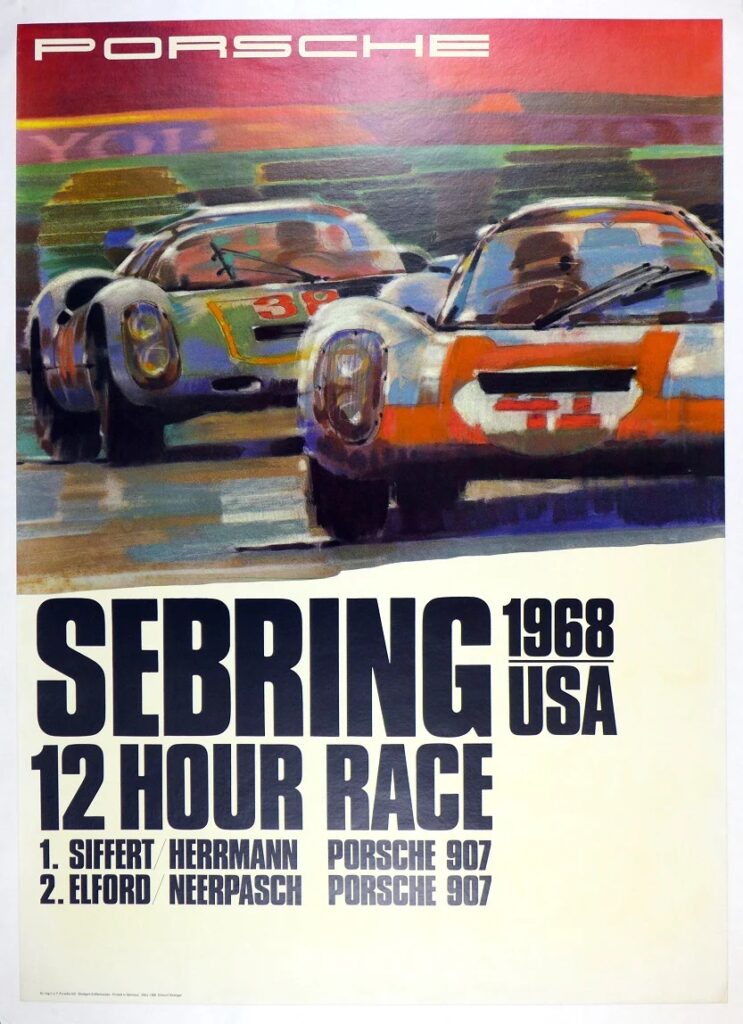
…or the very early ones, like this Showroom Poster
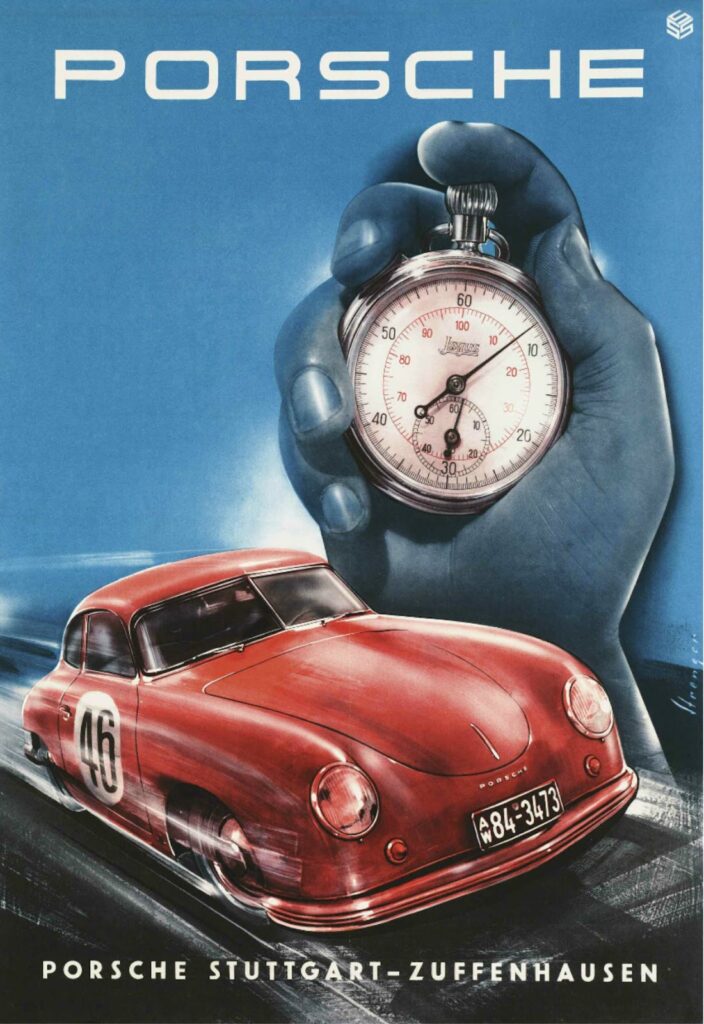
To understand the evolution of Porsche posters, you need to understand the evolution of Porsche itself.
Creating Porsche’s iconic design
Porsche was founded in 1931 in Stuttgart, Germany, by Austrian Professor Ferdinand “Ferry” Porsche.
Ferdinand’s vision roared to life in 1948, when 200 workers helped build the initial Porsche 356. A year later, 52 of these beauties rolled out of an Austrian garage for the first time.
And thus, an automotive empire was off the ground.
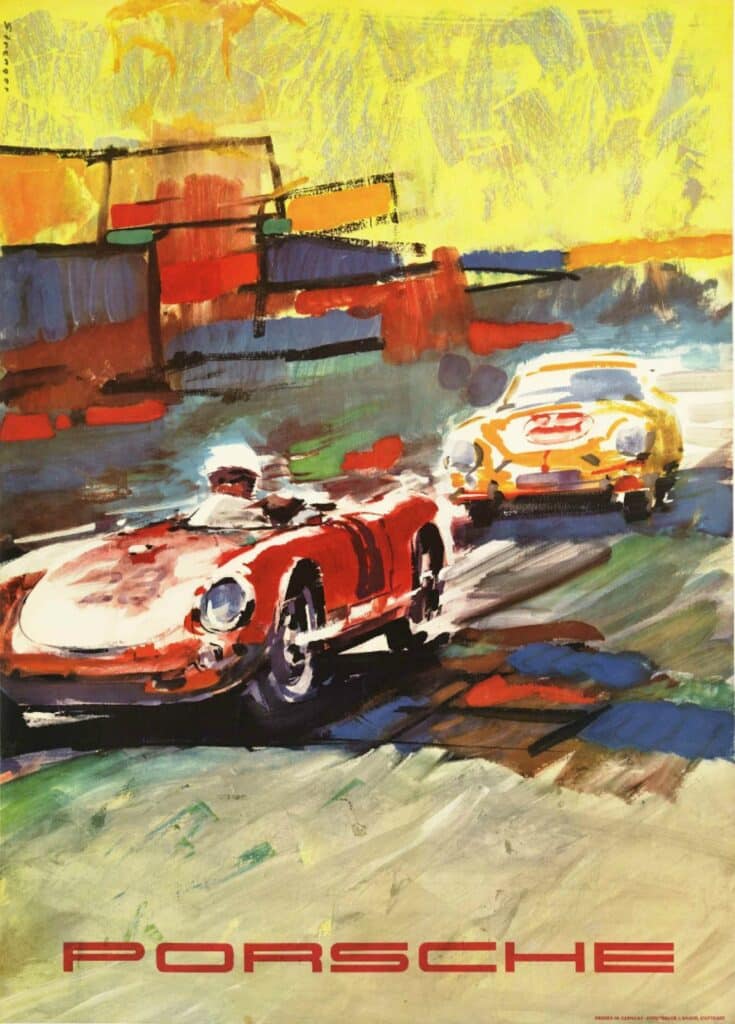
In an era dominated by big, heavy Aston Martins and BMWs, it was basically a Volkswagen Cabriolet with a supercharged engine that inspired the professor.
Ferry favored a lightweight design with more power, built into a smaller frame. The result wasn’t just a car that could handle better at the same speed, but was, quite frankly, “more fun to drive.”
The 356 would expand to two-door coupes, convertibles and roadsters before being discontinued in 1966.

Porsche 550 Spyder
The Porsche 550 Spyder was introduced at the 1953 Paris Auto Show before going on to win the Nurburgring Eifel later that year. Only 90 were made between 1953 and 1956, making them quite popular among collectors.
James Dean was driving his “Little Bastard” 550 Spyder when he met his fate on California’s 46 Freeway.
The iconic Porsche 911
After the 356 model was retired, the Porsche 911 became king of the road and automotive racing lore.
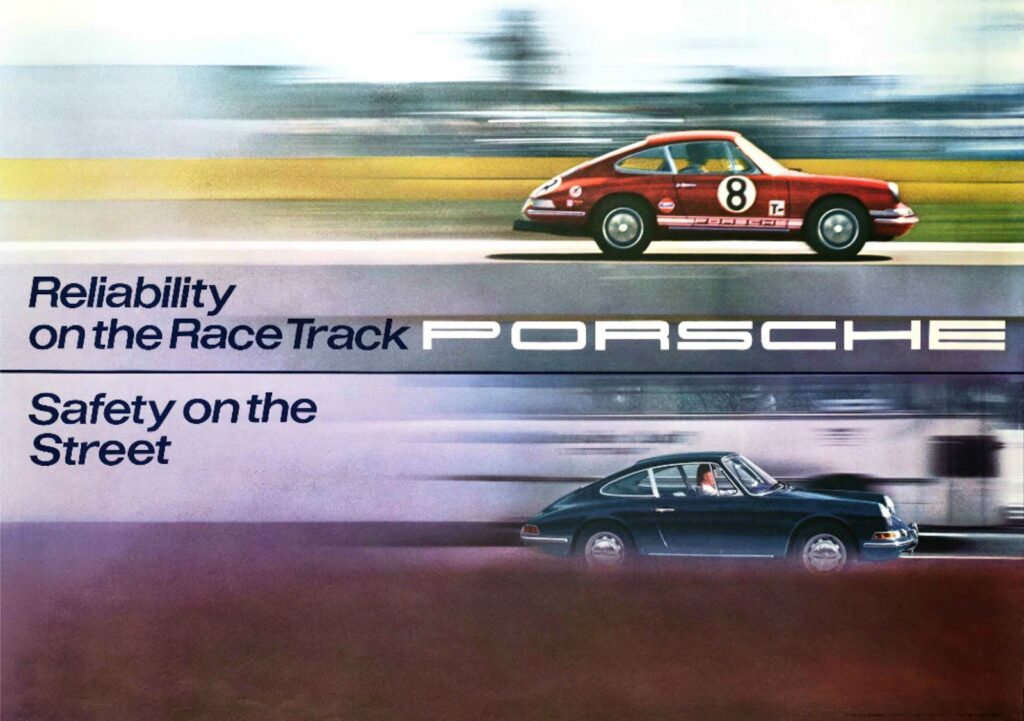
The model, which turned 60 earlier this month, has spawned several remakes, such as the Porsche 930, 964, 993, 996, 997, 991 and 992.
The 911 Carrera RS (Rennsport or Race Sport) was among most notable models from this era. They dominated the race tracks in the 70s, including a second-place finish at the 1974 24 Hours of Le Mans.

“Posterizing” Porsche
Few other car companies have mastered the art of telling their history via posters and print ads.
Among the first influences of Porsche posters came from the works of Erich Strenger.
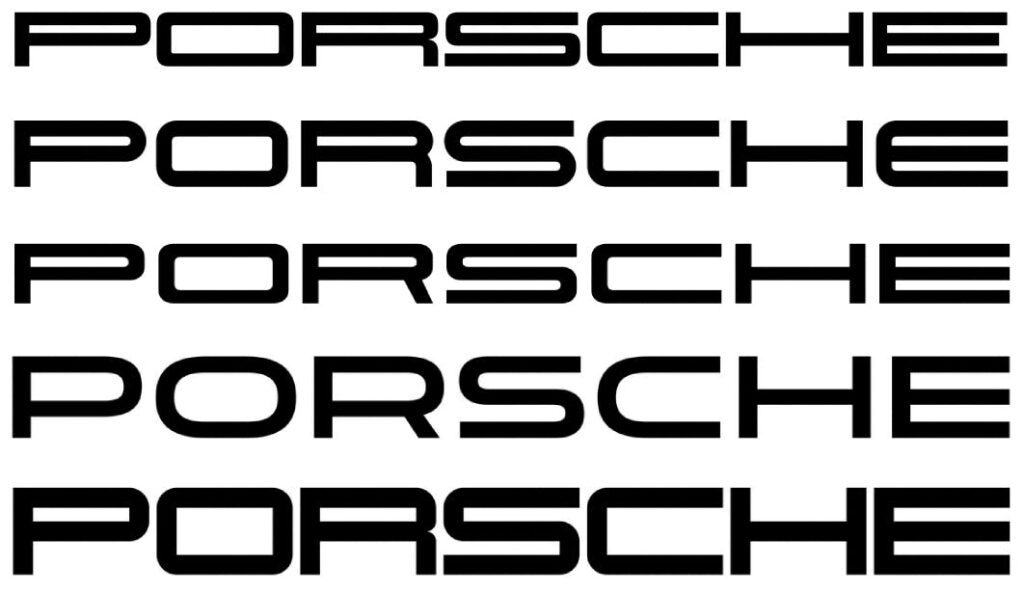
In addition to creating ads, Strenger created brochures and racing posters, and founded the company’s in-house magazine, Christophorus.
These early posters depicted Porsche after major race wins. And they were hard work.
The team would win, and Strenger would get a telegram (remember those? No? Me neither!) from a far-flung place like Agadir, Morocco. Often there were no actual photos, and he’d use a drawing to get going, so that posters could be sent to Porsche dealers around the world in time, with the motorsport magazines reporting about the wins!
The very first Porsche poster was the Porsche Gagne (which translates to “Porsche Wins!” from the 1951 24 Hours of Le Mans. This only came in French, and it is believed that even Porsche themselves don’t own it in their archives.
Frank Barrett, co-author of a book called The Porsche Showroom Posters (great resource) thinks it is the most valuable of them all.
Other dealers also think that the two versions of the Porsche Gagne and the two versions of the Stopwatch posters (shown above) are the holy grails and can sell for up to $40,000.
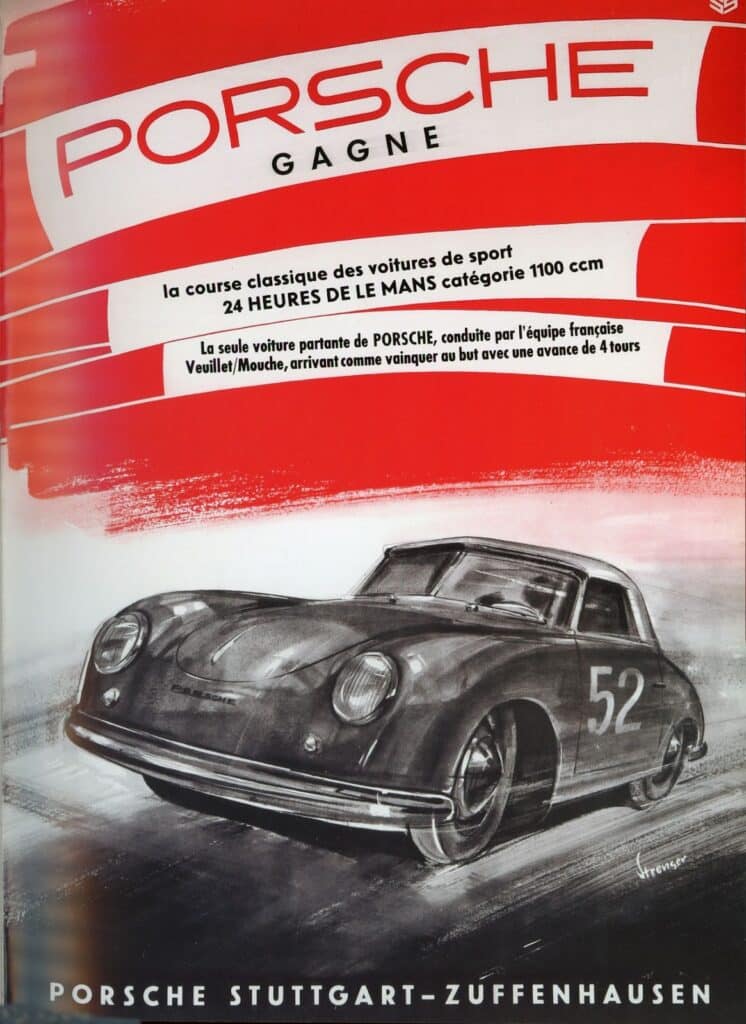
The first Porsche posters began hitting walls shortly thereafter in the 1950s, less than a year after the first model 356’s came to market.
The early posters depicted the racing side of Porsche, with what are now classic posters dedicated to famous races such as the Mille Miglia, the 24 Hours of Le Mans and the La Carrera Panamericana (for which the Carrera got its name after its success south of the border).
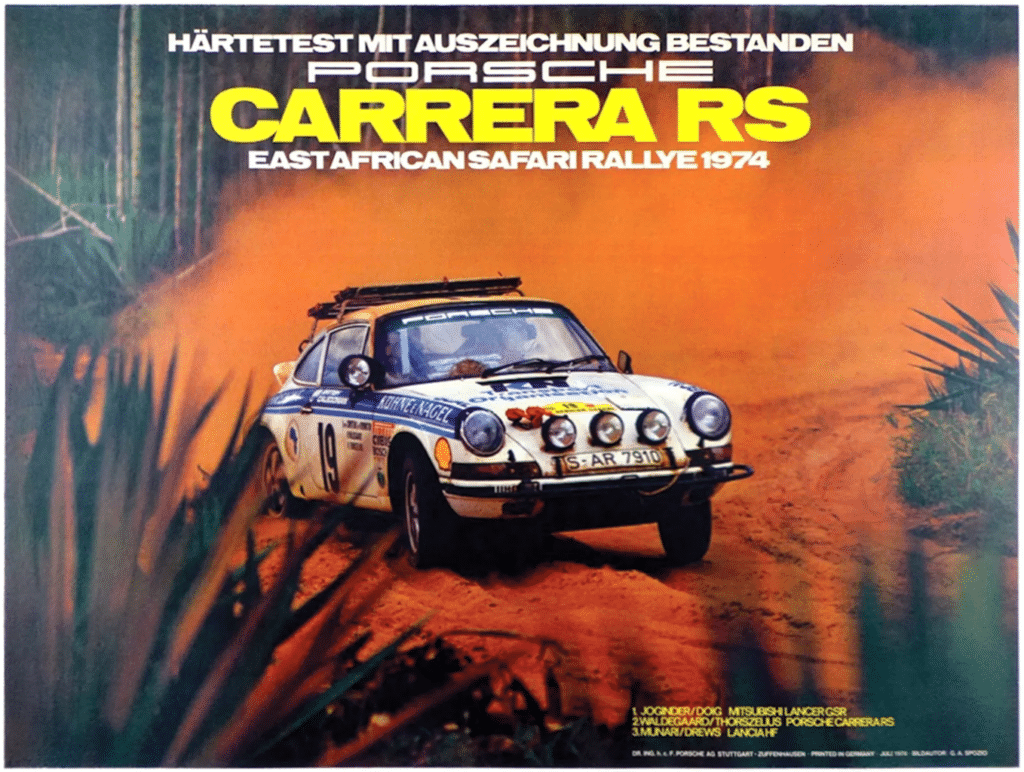
As showroom posters grew in popularity in the 60s and beyond, detailed versions of Porsche engines, axles, and other interior mechanisms carved their own niche.

Then there are the glam posters. These vivid, splendid Porsche models are displayed for all to see and gawk at. And, of course, dream of.
Today, these posters can be quite valuable, fetching upwards of tens of thousands of dollars.
What to look for in a Porsche poster
As with any vintage poster, it helps to know what to look for before investing.
Factors to keep in mind include demand, quality, rarity and an association with a famous person or event, like one with Steve McQueen on it, for example. McQueen drove the 917 on screen, and also owned a 356A, a 908, and 911S.

First, look at the date and the poster size. Dates and sometimes rarity should be marked very clearly on original prints.
Vintage prints also tend to be different sizes than today’s standard posters. Originals were printed with ink on lighter-weight paper, rather than the sturdy stock of today’s posters (meaning they are very delicate).
It’s also important to check for any blurring or definition loss, indicating that the image was pulled from a digital file. This is especially important with the finely detailed Porsche posters.
And lastly, there is the hunt. These are not easy to find, and many get sold privately.
Join your local Porsche Club — they exist all over the world. Connect with fans and try to find bargains.
Obviously I’m biased, but HobbyDB is a great place to start! Remember that Sebring Porsche poster that sold for over $11,000? You can buy that same poster right now for $2,385.
Closing thoughts
I hope this article has shed light on the allure and potential of Porsche posters; not just as aesthetic gems, but also as valuable investments.
Porsche, a brand synonymous with elegance and performance, has a unique ability to captivate humanity. The company has left an indelible mark on automotive history, and the world of Porsche posters is a treasure trove of automotive artistry.
As you embark on your journey into this niche collecting world, remember that these posters are more than just decorations; they are pieces of automotive history and cultural artifacts. Each piece tells a story, and preserves a slice of Porsche’s illustrious past.
Like with any other collectible, the blue chips are what matter most. Buy the best items and in the best condition that you can. These are the posters that will appreciate the best.
But most importantly, buy what you love. Yes, these can make great investments, but this world isn’t just about the potential financial gain. It’s about the joy of owning a piece of art that transports you back in time, and evokes the spirit of Porsche. 🏎️
Further reading
- HistoricCarArt.net has some really cool Porsche prints, including this one I really like
- This Pinterest user has put together a nice collection
- Displate.com has an even more impressive collection of 911 metal posters
- The growing Instagram account @evolutionofit used AI to morph 60 Porsche models in 24 seconds
- In 2022, Porsche finally got the green light to join F1, but they still don’t have an F1 team, and plans are on ice.
- Jerry Seinfeld bought an entire Upper West Side building for his vintage Porsches (because syndication residuals are amazing economics for actors, and this is why they’re still on strike)
- You may know Porsche has branded fine watches, but did you know they’re now branding luxury Miami condos? The 132 units ranging from $4m to $32m aren’t the first — Aston Martin has a building right around the corner.
- Read our deep dive review and analysis of HobbyDB
That’s a wrap!
A big thanks to Christian Braun from HobbyDB for authoring this issue.
If you’d like to speak with Christian Braun, reply to this email and I’ll make a personal introduction.
What do you think? Are you a Porsche owner? Did we inspire you to invest in a Porsche poster? Are you one of the few haters? What did we miss?
Let us know, we love hearing from readers.
Until next time, Stefan
Disclosures
- This issue was sponsored by our friends at RADD America and Odys
- HobbyDB did not pay to author this issue.
- Our ALTS 1 Fund holds no Porsche posters, and no assets mentioned in this issue aside from the Grateful Dead poster.
- This issue contains no affiliate links.











